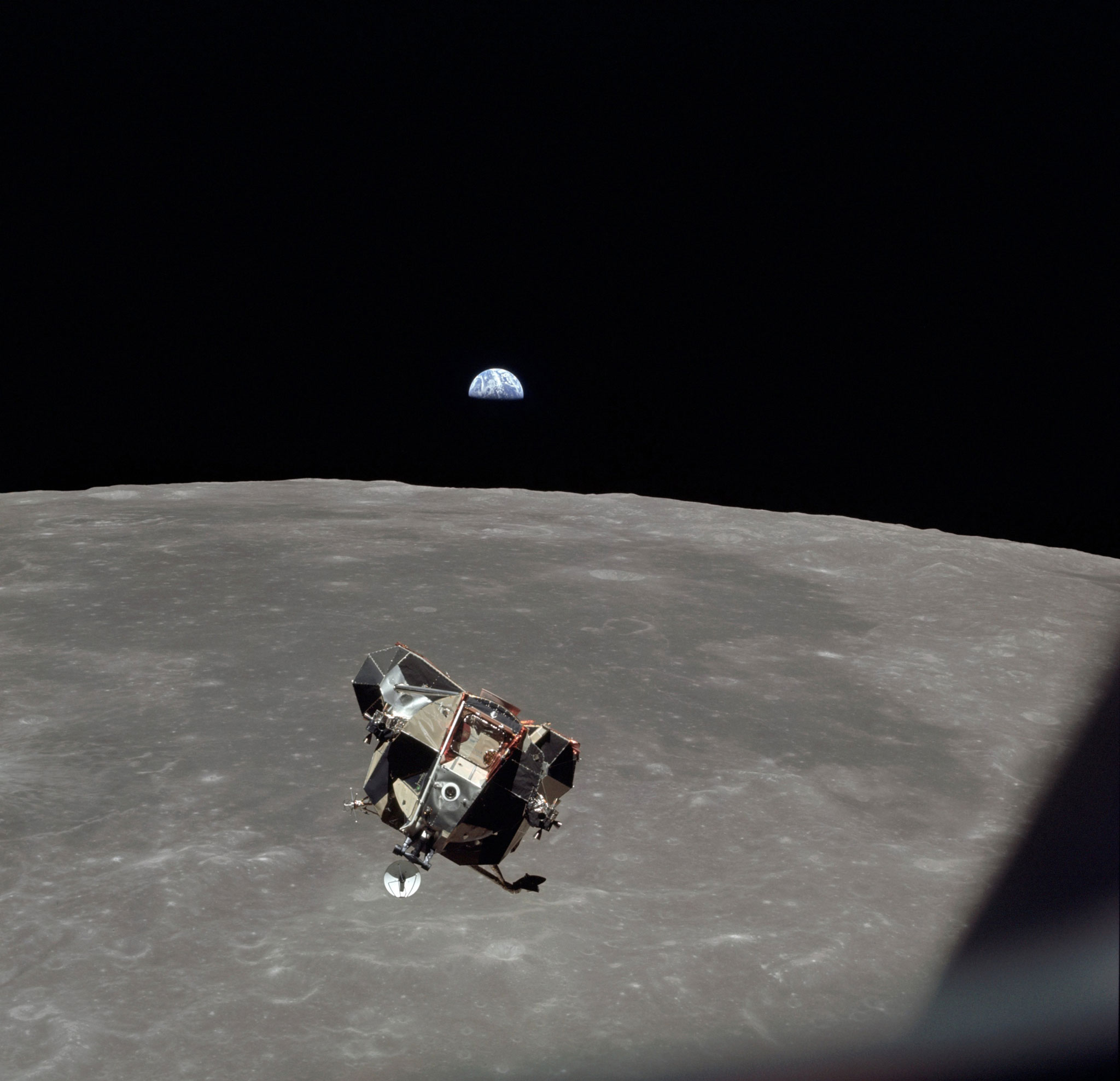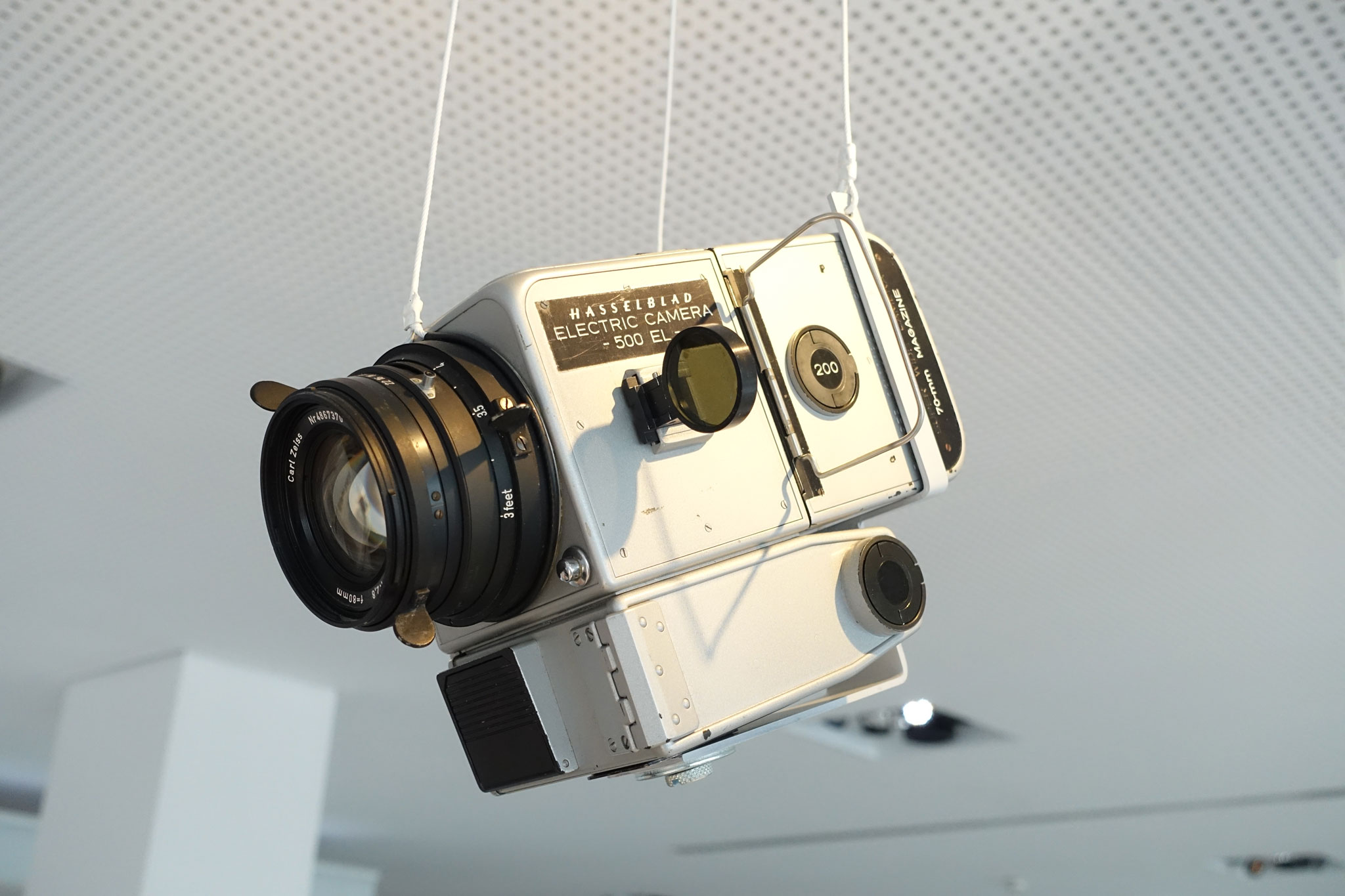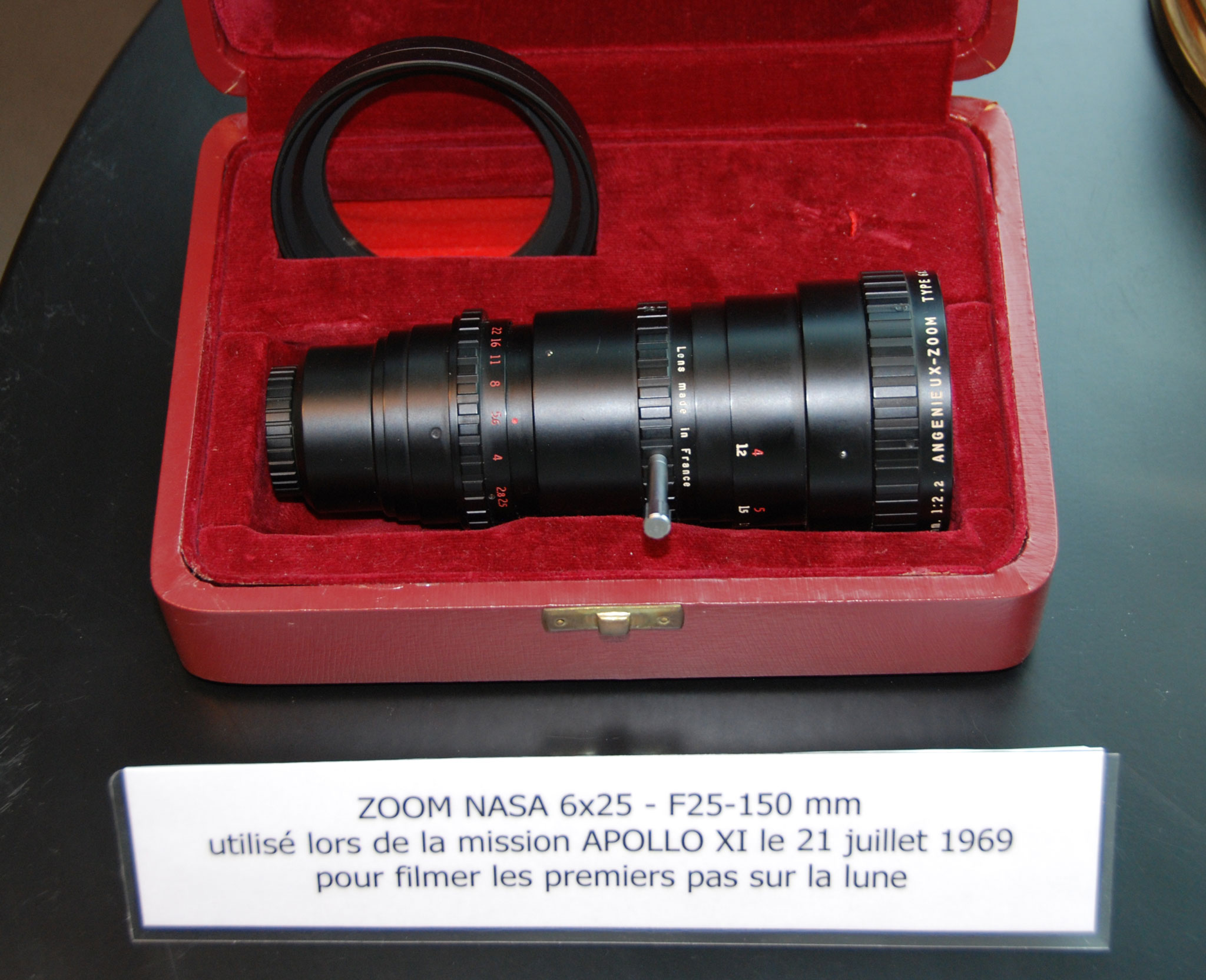
Description from NASA: “The Apollo 11 Lunar Module ascending with Astronauts Neil A. Armstrong and Edwin E. Aldrin Jr. aboard, is photographed from the Command and Service Modules (CSM) during rendezvous in lunar orbit. The Lunar Module (LM) was making its docking approach to the CSM. Astronaut Michael Collins remained with the CSM in lunar orbit while the other two crewmen explored the lunar surface. This view looks west. The Earth rises above the lunar horizon.” Photo from Shutterstock.
Fifty years ago today, Apollo 11 astronauts Neil A. Armstrong and Edwin E. “Buzz” Aldrin landed on the moon. Their Apollo 11 rocket lifted off from the Kennedy Space Center in Florida on July 16, 1969 and splashdown back on Earth was on July 24, 1969.
NASA describes the historic moment: Aldrin opened the forward hatch of the Lunar Module (LM) Eagle. Armstrong released the Modularized Equipment Stowage Assembly (MESA) to which was attached a black and white Westinghouse camera (equipped with a Fairchild lens.) Hundreds of millions of viewers on Earth watched him descend the ladder down to the landing leg’s footpad. Armstrong announced, ‘I’m going to step off the LM now.’And at 9:56 PM Houston time he did just that, firmly planting his left foot onto the lunar surface, proclaiming, ‘That’s one small step for a man, one giant leap for mankind.’
Read the full story “50 Years Ago: One Small Step, One Giant Leap” on NASA website.
Armstrong had a Hasselblad (HDC Data Camera) Medium Format Camera with a ZEISS Biogon 60mm f/5.6 lens fitted to his chest harness to shoot stills of the lunar excursion. A second Hasselblad 500 (HEC Electric Camera) with ZEISS Planar 80mm f/2.8 lens shot from inside the Eagle LM. Upon departure, the film magazines were removed and both cameras were left behind to save weight for the return to Earth. There seem to be a lot of Hasselblads abandoned on the moon: from Apollo 11 to Apollo 17, twelve camera bodies were left behind. Only the film magazines returned to earth. Read more about Hasselblad in Space.

Hasselblad 500 EL Electric Camera with ZEISS Planar 80mm f/2.8 lens – similar to those left behind on the moon – in the ZEISS Optical Museum, Oberkochen, Germany. Photo: Jon Fauer
Meanwhile, Astronaut Michael Collins was in the Command Module (CM) Columbia, circling the moon. And this is where it gets interesting for us cine camera and lens geeks.
Angenieux historians write, “A color camera with an Angenieux 6×25 16mm format zoom lens in the Command Module shot live color images of Neil Armstrong and Buzz Aldrin on their trip to and from the moon. A 16mm Maurer camera with Angénieux 75mm f/2.5 prime lens was also shooting film of the Lunar Module’s separation and docking maneuvers from the porthole.”
The first 6×25 zooms (25-150mm) were actually 6×12.5 f/2.2 (12.5-75mm) with a 2x teleconverter. To deal with zero gravity and space travel, Angénieux worked on special lubricants because normal lens grease would evaporate and fog the lens elements. New optical coatings were developed to combat solar radiation.

Angénieux NASA 6×25 (25-150) Zoom — same model as used on Apollo 11 — on display at Angénieux headquarters in Saint-Héand, France
Angénieux 16mm format prime lenses had been onboard NASA’s Ranger missions beginning in 1964. The ultra-fast Angénieux 25mm f/0.95 primes were deployed on Ranger 7, 8, and 9—capturing some of the first photographs of the Moon—especially in low light.
NASA Gemini missions (from 1964-1966) carried Angénieux 18mm f/2, 25mm f/0.95 and 75mm f/2.5 prime lenses on Maurer 16mm cameras. Apollo 7, 8, 9, 10 and 11 also carried the same 16mm camera and lens packages.
Further details about Angénieux history, milestones and product information—including the famous Angénieux 6×12.5 /6×25 16mm format zoom onboard Apollo 11—are beautifully described in the wonderful new book, Angénieux and Cinema, from Light to Image. It is available from major bookstores, online and (soon) on the Angénieux website.
Read a fascinating and thorough article about Angénieux and Apollo 11 online on the AngéBlog.








